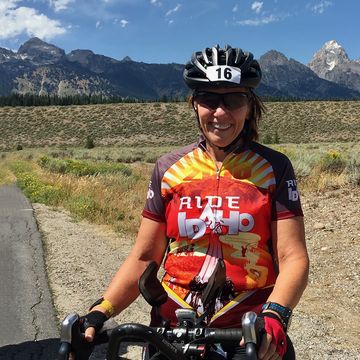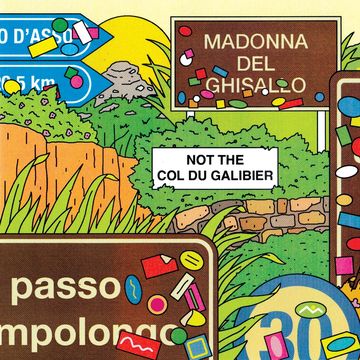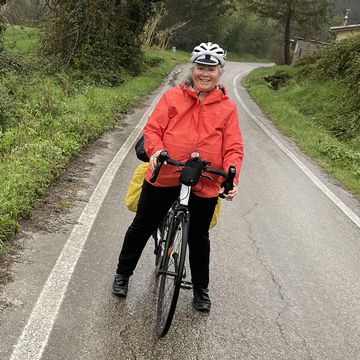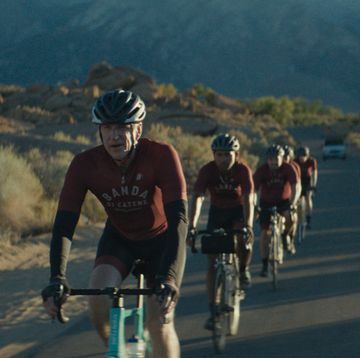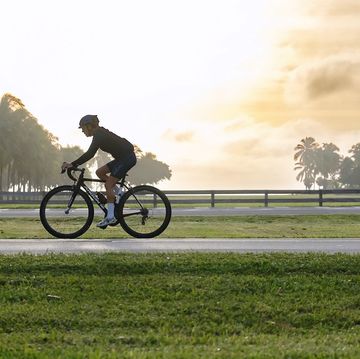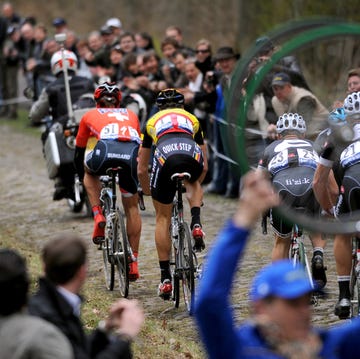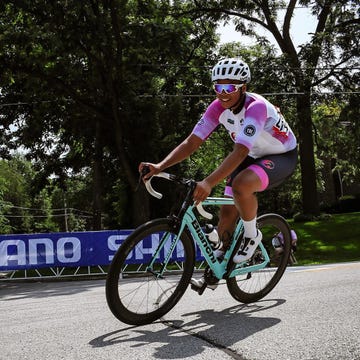Dear bike industry professionals,
My name is Ayesha McGowan, and I’m an elite road racer and cycling activist. You may know me from my mission to become the first African-American female professional road cyclist (which has been covered by outlets like BICYCLING, Outside, ESPN, and BBC News). I’ve also worked in bike advocacy, getting more women and people with disabilities into riding.
Diversity and representation of minorities is a hot topic in mainstream and outdoor media right now, and in 2017 I noticed that several cycling companies launched marketing campaigns—primarily digital and video—in an attempt to embrace the idea that cyclists come from all walks of life.
Unfortunately the content created rarely included any folks that look like me. Many of the campaigns featured more women, and inclusive language. But when people of color were shown, they were few and far in between, as though they were filling a quota. In some cases, these roles were filled by non-cyclist models instead of athletes, which was not the case for their white counterparts. This approach is tokenization at best.
I don’t want to blame anyone or point fingers. For the most part, I thought these campaigns were beautifully done, and I truly want to believe that the lack of real diversity was merely an oversight, rather than intention.
I reached out to those brands with my thoughts, and it turned out many of the content creators hadn’t really considered the lack of POC in their campaigns. Another common response was, “We have included [enter person of color] in campaigns in the past,” or “Diversity is very important to us, as reflected in our support of [enter POC athlete/model].”
Why #RepresentationMatters
If you need a reference for how poorly underrepresented minorities are in cycling media, visit the websites or social media of most bike brands, and play the representation game:
a. How many clicks or images until you spot a POC?
b. What’s the ratio of POC to white folks?
c. Repeat a and b with WOC.
[Editor’s Note: I took Ayesha’s challenge and played the first part of the Representation Game with three major cycling brands. On the first site, I clicked 15 times until I saw a POC—the photo was related to a charitable organization sponsored by the brand, and technically I had to navigate off the main site to see it. On another site, the only POC I saw was one of the brand’s few sponsored athletes of color. On the third, I got to a POC in six clicks—but again, the photo was related to a charity that supports needy communities in Africa. Ayesha gets to why this is problematic in solution number 5, below.]
In reality, the cycling community at large is a rich collective of so many different kinds of people. The industry would benefit from reflecting this diversity in the content it creates. Not only is it good for growing the sport, but it’s great for business. An entire population of humans is being ignored. If people see themselves in your products, they will be more likely to give you their money. Black folks, for example, are so used to being ignored that when a company makes an effort to include us, we get excited. We tell our friends. It's a thing, I promise you. (The most recent example of the power of the black dollar: the movie Black Panther is now the fourth-biggest US box-office hit—ever.)
What You Can Do
I don’t claim to have all of the answers, but I do know we should be discussing the problem so that we can work toward a solution. Here are 10 ways bike industry professionals can do a better job of promoting diversity in cycling:
1. Understand why it has to start with you.
The bike industry shapes how we define a cyclist through the imagery and language used in the content you create—ads, print and online stories, photography, marketing videos, social media, etc.
2. Include women—and then go further.
Many folks I have spoken to in the cycling industry (mostly white, cis-gendered men) have the notion that diversity simply means including both men and women. Diversity is more than that. Diversity means showcasing different races, genders, cultures, ages, body types, sexual orientations, economic backgrounds, etc.
3. Recognize it's about equity, not equality.
Equity is the solution, equality is not realistic at this time. Equity is defined as the quality of being fair and impartial despite preconceived notions and traditions. Equality is defined as the state of being equal, especially in status, rights, and opportunities. Equality is not possible right now because not everyone is starting from the same place. The industry has represented one type of cyclist for so long, that it’s got some catching up to do.
4. Be deliberate.
The cycling industry has looked the same way for so many years. Balance will not come into existence naturally. Have content creators (conceptualists, photographers, videographers, editors, etc.) make it a point to implement equity. Create practices that force you to hold standards for representing POC regularly and positively. While quotas aren’t a complete solution, they can be a starting point. Including women and people of color must be a priority of the folks creating the content, or it will continue to feel unnatural to the both the creator and the viewer.
5. Know the difference between representation and tokenization.
Including people of color is a start, but it’s important to make sure those representations are positive reflections of their culture and don’t play into common stereotypes. For example, a lot of POC representation in cycling content depicts at-risk youth and/or impoverished communities. These aspects of the culture should definitely be represented, but we shouldn’t forget there are also thriving communities of color and working-class adults that participate in the many disciplines of cycling. Show different types of POCs as you would for any type of cyclist.
6. Hire POCs!
A POC creator is more inclined to understand the nuances that will create a more authentic final product that positively represents diversity and avoids tokenization. Reach past your existing networks for the hiring process. Research a new pool of talent to bring into the company. You might be surprised by how much your company would benefit from a fresh perspective.
7. Be creative when you scout talent.
Similar to extending your network for hiring employees, utilize social media, recruit attendees at trade shows, and otherwise do your research to find POC models or subjects for stories. Find and support the people you want to see—don’t assume they don’t exist.
8. Keep asking questions.
Always be critical of the things you create and ask yourself, “How well have I achieved my goal of representation with this project?” and “What can I do better?”
9. Be willing to get uncomfortable.
Discussions about race and gender can feel awkward. But if folks are willing to open up and ask questions, then we can truly work together.
10. Treat each new piece of content as a new opportunity.
It doesn’t matter what you’ve done in the past. Every single time you create something new, it’s a chance to be aware of whether you’re promoting representation during every stage, from conception to post-production.
It’s time to make these changes, and you can set the example for other folks in the industry to follow. If you work for a bike brand, and you want to talk about the topic of representation more or even bounce around ideas for future campaigns, I’d love to chat. Hit me up on Twitter @ayesuppose for starters. Let’s keep this conversation going.
A truly diverse cycling community starts with the industry. Y'all have the power.
—Ayesha, advocate and athlete






